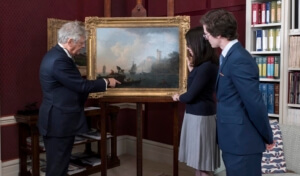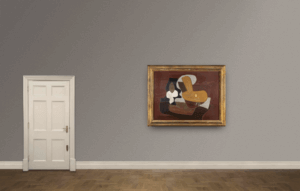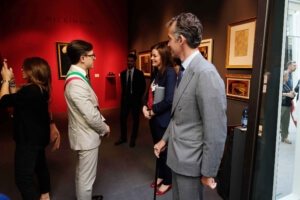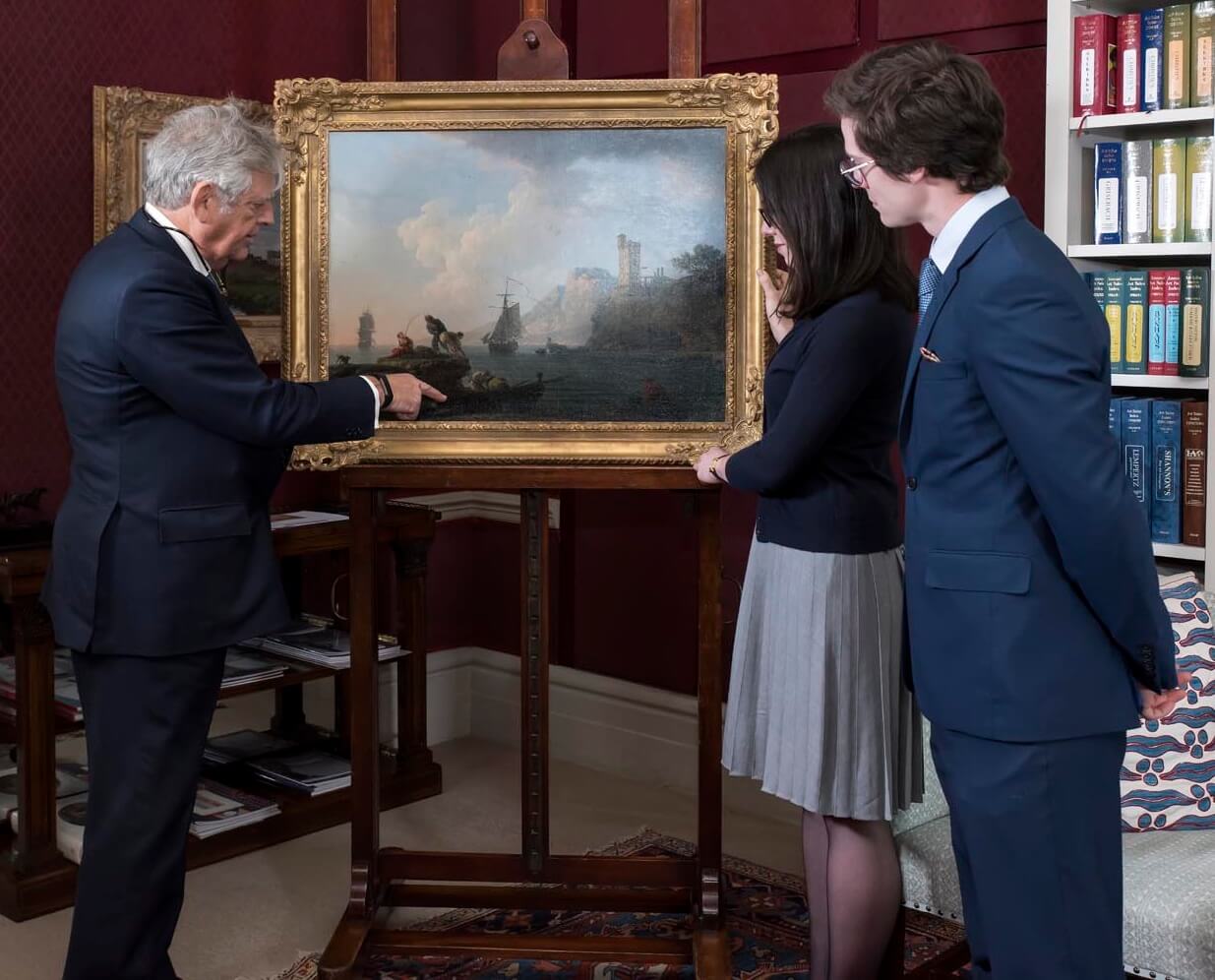It’s 2020, and everyone is going digital! Even before COVID-19 forced the temporary closure of physical gallery spaces, dealers had been rolling out the latest in virtual viewing rooms and fair stands, while keeping up to speed on multiple social media channels. Auction houses, meanwhile, have been chasing online bidders for years, and they’re now a noticeable presence at the sales; Sotheby’s reported that in 2019, only 26% of bids were executed in the room or over the phone during the sale, compared to a whopping 74% bid online or registered in advance. In a virtual world, is the importance of viewing artworks in person diminishing?


Dickinson’s Old Masters department
For us, the answer is a definite no. There is not, and never will be, a true substitute for the experience of viewing art first-hand. A flat image can tell you generally what a painting looks like, but it’s tremendously difficult for even professional photographers to capture the nuances of tone and colouring, and some images differ hugely from the paintings themselves. Plus, a photo can’t tell you about factors like a picture’s wall power, nor about how it looks in the context of other paintings – or even in the context of your own collection, which our van visit service can offer. And a 3D tour might allow you to walk around a sculpture, but it can’t let you look at it from all angles, nor hold it and feel the weight in your hands. When you’re in the room with an artwork, you can observe every tiny detail: from the weave of the canvas to the irregularities in the varnish, the way the colours change in artificial versus natural light, the evidence of repair or retouching from different perspectives, and even the subtle variations in a patina that might just look flat and brown in an image.


Picasso’s Mandoline et portée de musique (1923 or 1924) in Dickinson’s Online Viewing Room
Digital images also can’t give you a complete picture, so to speak, of the condition of a work of art. A report from a professional conservator can offer a description of the condition, but it is also important to understand how any condition issues might affect the appearance of a piece – if the impasto in an Impressionist painting is flattened, for example, it might not bother you in a photograph, but could prove distracting when the painting is hanging on your wall. And it’s not just a question of appearance: condition affects value, and what looks enticing on your screen might have a heavy relining or an unexpected, mended tear! Moreover, most galleries and auction houses provide in-house rather than independent conservator reports for works on offer, making it all the more important to gain a thorough understanding of the condition of a work before you buy it.


Detail of E. Boudin, Trouville, Scène de Plage, 1884, oil on panel
Plus – it might sound obvious to state, but looking at artworks in the context of a gallery exhibition, auction or art fair is fun! It’s not just about the single work, it’s about a full experience, one that encompasses the anticipation of the search, conversations with old friends, and maybe even the thrill of competition when you see another collector taking a close look at something you want. The glamour of the experience, including travel to exciting locations and perhaps a few parties, contributes to the appeal of the purchase. None of this can be replaced by the sheer convenience of looking at artworks on a screen, from the comfort of home.


The mayor of Florence visiting Dickinson’s stand during the Biennale Internazionale dell’Antiquariato di Firenze, 2019
We consider digital platforms, such as virtual viewing rooms, to be among the many valuable tools we are pleased to be able to offer our clients. In many instances, it will be the digital information – whether it comes in the form of an illustrated brochure, a virtual viewing room or even just a jpeg image pinged across Instagram – that first piques a collector’s interest, prompting him or her to follow up with one of our specialists. In some cases, a collector who is abroad or otherwise engaged may only have the opportunity to view digital images of an artwork coming up for sale, but he or she is able to rely on one of us to view the artwork, in person, on their behalf, and provide a full report. Under normal circumstances, we are always happy to meet you for a thorough assessment of an artwork: from examining the condition under black light to evaluating the frame to determine whether it is period or reproduction, and sympathetic or not. Digital imagery and virtual viewing rooms aren’t designed to replace the experience of first-hand viewing, but rather to work in tandem with it, as one useful means of gaining information.


Visitors on Dickinson’s stand at Masterpiece 2019
In a sense, it’s the difference between taking a virtual tour of the Met on your laptop, and visiting the museum in person – the virtual tour is informative and entertaining, but which of us isn’t relieved that the world’s great museums are beginning reopen? (Or, for that matter, that galleries such as Dickinson can now open by appointment from June 15th?) We know we are!


